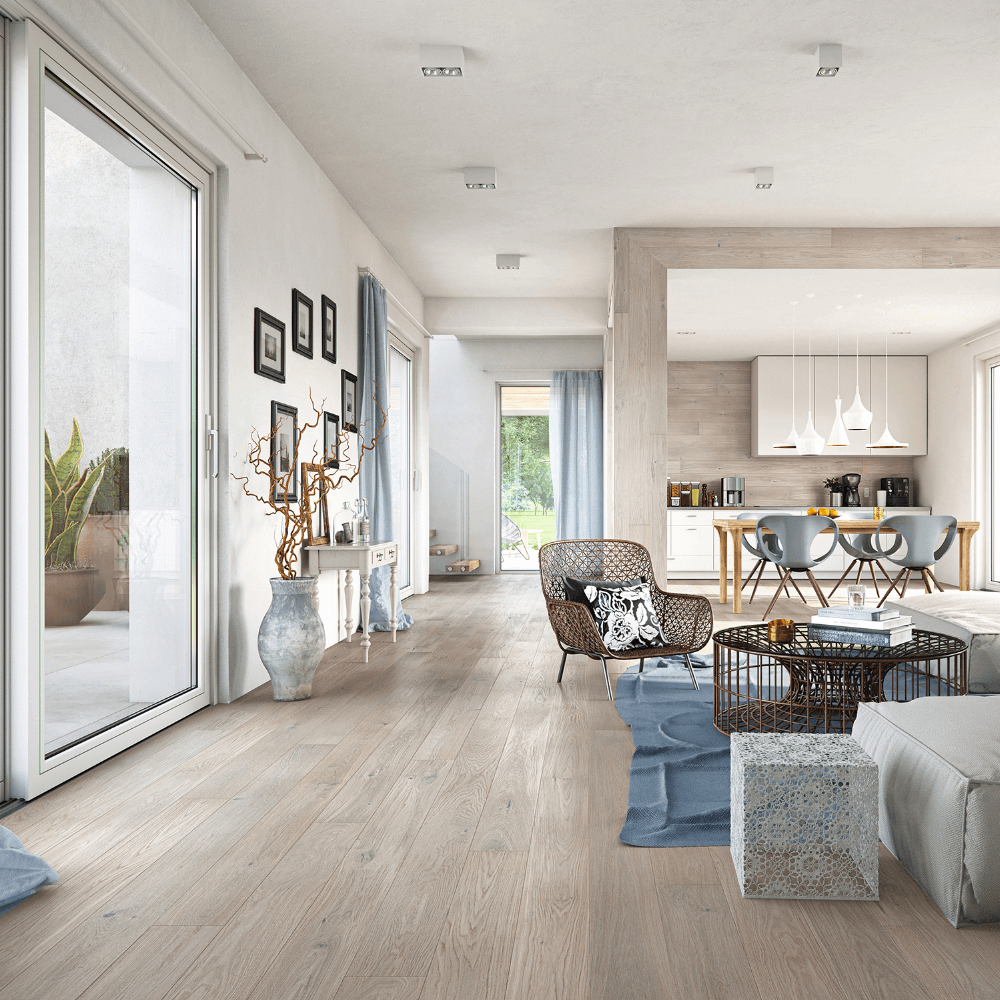How To Acclimatise Flooring
Preparation is key when thinking about installing a new floor. An important step that many may overlook when buying a floor is acclimatising. Is acclimating important? If so, why? And how do you acclimatise flooring?
What is Acclimatising a Floor?
Acclimatising a floor is like allowing it to settle into its new home before it gets put down. You are essentially conditioning it to its new environment. The reason for this, more so with real wood than other hard surface flooring options, is that wood reacts to moisture and temperature.
It is a common thing for wood (or other hard surface floors) to naturally move around. They do this because of moisture and temperature fluctuations. When wood gets wet, or when there is too much heat (thus reducing moisture), the wood will naturally move to accommodate for the new conditions.
(Note: Laminates and vinyls do this as well, but not to as much of an extent, thus their acclimation periods are shorter).
Why is it Important to Acclimate a Floor?
The reason it's important to acclimatise a floor to a new environment is that if you don’t, you risk the floor boards moving, buckling, or warping, which will ruin the floor after it has been put down. Gaps could appear between the boards as well as cracks along the surface.
To put it into context, a floor will usually have been sitting in a warehouse or in a unit for long periods of time before a customer purchases it. So the floors have already acclimatised to a colder, potentially more humid or dry environment. The boards are a size that has been conditioned to that kind of environment, which will be drastically different from that of a residential area. So once they are in a residential area, which is likely to be more humid and warm, the boards will naturally expand to accommodate for this change. If they are installed before this, they will expand once they are laid, squeeze against each other and the walls, and will continue to do so until they warp or buckle.
How to Acclimatise Flooring
Acclimatising wood flooring is very easy. You put the boxes in the room that you intend to install them in, open the boxes so the air can get between the boards, and then leave them there for set amounts of time as per the below guidelines:
Solid wood: 72 hours
Engineered wood: 48-72 hours depending on the manufacturer
LVT (Luxury Vinyl Tiles)/SPC rigid core vinyl: 24 hours
Laminate flooring: 24 hours
This will allow the flooring to adjust to its new environment. Acclimatisation should be done when your room is between 17-26 degrees Celsius and has humidity levels between 25-70%. Your flooring’s humidity levels should be between 8 and 12%. Note that if the flooring was delivered on a day when it was raining, you should allow an extra day for acclimation due to the increased moisture it has been exposed to. Each pack of flooring you order should have instructions from the manufacturer on how to acclimate, so read carefully!
As mentioned previously, natural real wood products are most liable to expand under different environmental conditions. In flooring, these are solid and engineered wood floors. Engineered wood floors can have shorter acclimation periods because of their construction. They are manufactured with a plywood base under a veneer of oak, specifically constructed to reduce movement. So they still can contract and move naturally, but not as much as solid wood, which would just be a whole board of hardwood like oak or maple.
Laminates and vinyl are man made, thus are not as liable to expand. They still need to be acclimated, but for shorter periods of time, and there is a decreased risk of them expanding or moving once laid.
To summarise, you should ensure the temperature and humidity levels of the room you intend to install new flooring in are stable and consistent, and allow the floor to sit in the room for the specified amount of time as listed by the manufacturer. Especially with real wood products.

